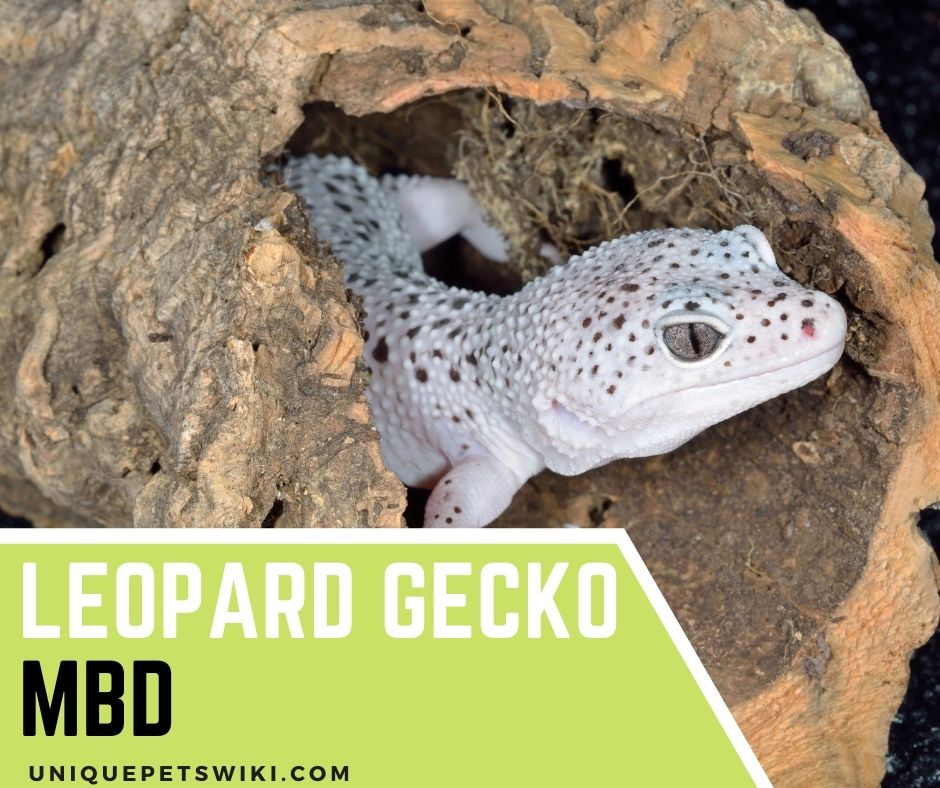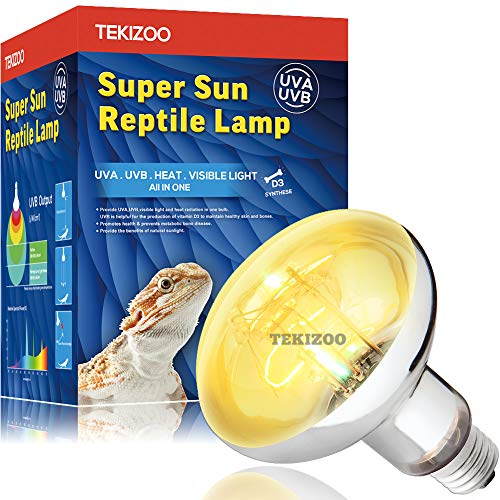Nothing can get you down, like getting news that your beloved leopard gecko has a metabolic bone disease (MBD).
It’s always unbearable to see these innocent lizards restless, with their bodies shivering and unable to bite anything with their soft and weak jaws. It’s only deformed by calcium deficiency.
MBD is a serious disorder and can be pretty fatal. It can wipe out hundreds of leopard geckos in only 6-12 months if not addressed immediately.
This article profoundly explains leopard gecko MBD, the underlying cause of this disorder, its treatment, and prevention. This is not something you would want to miss. Know how to keep your Leo safe from MBD.
Contents
MBD In Leopard Geckos
The way you go the extra mile to eat and stay healthy to protect yourself from diseases should be the same concentration you give to your leopard gecko.
You know that our dear pets depend on us for everything, and therefore we should offer what is best to them, regarding their shelter, diet, exercise, and even security. Keeping your gecko healthy gives it the power to fight against diseases, including MBD.
Imagine visiting the enclosure, and the only thing to view is a weak, helpless, twitching leopard gecko. It would be the highest level of failure as a gecko owner, plus causing an innocent creature to suffer is inhumane.
Metabolic bone disease isn’t something to joke around with; it’s a merciless killer and can eat up your gecko within no time. All geckos can be susceptible to MBD, especially if they are not getting sufficient minerals like calcium.

What is MBD In Leopard Geckos?
MBD is pretty common in leopard geckos and other reptile species such as bearded dragons and iguanas. It is a fatal disease that slowly and systematically weakens a leopard gecko’s bones and metabolism.
The body works round the clock in the process of breakdown and renewal. Bone resorption is a crucial process and a requisite for minerals to be released from bones to the blood. It’s a process that responds to hypocalcemia.
The bones release some calcium to normalize the blood calcium level, which supports the body’s activities. Note that the process causes bone loss, hence creating the need for calcium replenishing.
A leopard gecko that doesn’t get adequate calcium from the diet or through supplementation will not replenish minerals to bones. Such an animal doesn’t have enough calcium in the blood, and therefore the bones keep on releasing it.
Eventually, the skeleton and muscles of the gecko become weak, leading to MBD. Likewise, hypercalcemia can cause MBD by stimulating the bones to release too much calcium, leaving them deficient.
Identify Leopard Gecko MBD With Warning Signs
A leopard gecko can contact MBD and stay for quite a long time before expressing the signs. That is simply because MBD develops slowly in the body and eventually becomes more severe.
That’s when the lizard starts to manifest the symptoms of this disease. You can actually live happily with your Leo without knowing a disease is progressing inside. But it’s possible to prevent such incidents by exposing the pet to regular check-ups.
Note that early detection and treatment of MBD increases the chance of your gecko recovering.
How Does MBD Affect Leopard Gecko?
So, how will you know if your leopard gecko is suffering from MBD and not another disease? Check the list below and see the warning signs brought about by MBD.
- Anorexia or struggling to eat,
- Soft, spongy, and impaired mouth and jaws
- Thin, deformed, or easily broken legs/arms (no external injuries),
- stress,
- swollen limb (occurs as the body strains to synthesize and lay down new fibrous connective tissues trying to fortify the weakened bones),
- paralysis,
- struggling with coordination or standing upright,
- crooked backs,
- bumps along the spine,
- unable to lift chest from the ground,
- constipation,
- flexible bones with dents,
- difficulty walking and the gecko tremble when moving,
- poor overall growth and development.
Can Leopard Geckos Live with MBD?
A leopard gecko can stay with MBD even for three months or more before revealing its signs and symptoms. The disease almost goes through a slow, gradual process before it is identified or shows observable signs.
It doesn’t happen in a flash, making it very difficult to notice often very early signs and symptoms, especially by the caretakers.
The worst stage of MBD is when it has advanced to its severity since the damage caused can be permanent and irreversible. Fortunately, it’s possible to stop further progression through proper corrective actions.
3 Causes and Treatment for Leopard Gecko MBD
Overall, metabolic bone disease is caused by a variety of different factors. It depends on what you’re depriving your gecko, right away from husbandry practices, nutrition, and diet.
MBD is curable when addressed promptly and correctly. Several different treatments and causes of action can be executed depending on the severity and the stage of the disease. Let’s narrow down to the real cause of MBD:
Lack of Calcium Levels in the Diet
Too little or lack of calcium in the diet is the most leading cause of MBD. The body needs a balance of calcium in the blood and bones.
Calcium is a crucial nutrient in regulating muscle functioning and strengthening bones and teeth. The body extracts calcium from the diet, and then it’s absorbed into the bloodstream, and excess is stored in the bones.
If the blood calcium levels go low, the bones release this mineral to bring its level in the blood to normal, thus creating an imbalance. Too much release of Ca from the bones without replenishing weakens the bones, leading to MBD.
The best approach to curb this problem is gut-loading insects and dusting them with supplements before feeding your gecko.
Lack of Vitamin D3
The body requires vitamin D3 to be able to absorb calcium from the diet. First and foremost, for successful conversion of inactive vitamin D to D3 (the active form of vitamin D), it’s all the work of UV and appropriate temperatures.
Even if your leopard gecko gets adequate food but vitamin D3 is too little or lacking, calcium absorption won’t occur. Ultimately, bone resorption takes place, posing the threat of MBD.
For adequate maintenance of vitamin D3, your gecko requires enough UV and heating. Temperatures of 32℃ and about 5% output of UVB rays are fine. Expose the gecko to light for around 12-14 hours.
Always avoid direct exposure of UVB to the lizard. Direct the light to a small area of the enclosure. It provides freedom for the gecko to choose how much UV light to expose itself to.
Affected by Other Diseases
Some leopard gecko diseases might be the reason for MBD in these lizards. For instance, Kidney and liver diseases may impair Vitamin D absorption.
Moreover, the parathyroid disease is also known to reduce calcium absorption. The disorders of the small intestines can also block calcium absorption.
Leopard geckos with these three diseases are more likely to get a metabolic bone disease. Ensure there’s a prompt treatment for any disease in your leopard gecko. Take the lizard to the vet for a check-up regularly.
How To Prevent MBD In Leopard Geckos
Fortunately, metabolic bone disease is preventable through a combination of factors. You can very well protect your dear Leo from this disease by providing adequate calcium, UV, and temperatures.
Hygiene and a balanced diet are also good solutions to MBD and have proven to be pretty effective.
Maintaining The Ideal Habitat and Hygiene
Consider putting the correct temperatures, humidity, lighting, and substrates to set up an ideal habitat.
Always make the cage clean, provide clean water and food, and keep the pet clean. A suitable and caring environment doesn’t only provide comfort but also gives protection against diseases.
Provide A Balanced Diet and Enough Calcium
By now, you know that calcium is essential in the body and should be at its correct level to aid the body functions.
Leos are pure carnivores, hence require healthy and nutritious insects such as roaches, mealworms, hornworms, crickets, etc. These insects are gut-loaded to boost their nutrients. It helps to increase the amount of protein and fat.
A balanced diet keeps leopard geckos strong, healthy, and safe from diseases. A combination of worms helps to produce balanced food.
Last update on 2022-12-30 / Affiliate links / Images from Amazon Product Advertising API
Last Sentences
MBD is common among the Leos and generally weakens the bones. It’s a preventable and curable disease, but its treatment depends on its severity. When detected early and treated, healing is guaranteed.
However, if it’s detected in the late stage and the signs are more severe, chances of healing are limited. The primary causes of MBD include too little calcium and lack of vitamin D3.
Some disorders like kidney and liver diseases impair calcium absorption and open the path for the geckos to get MBD.


